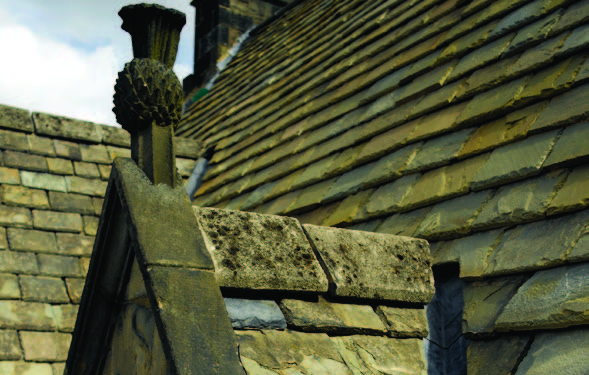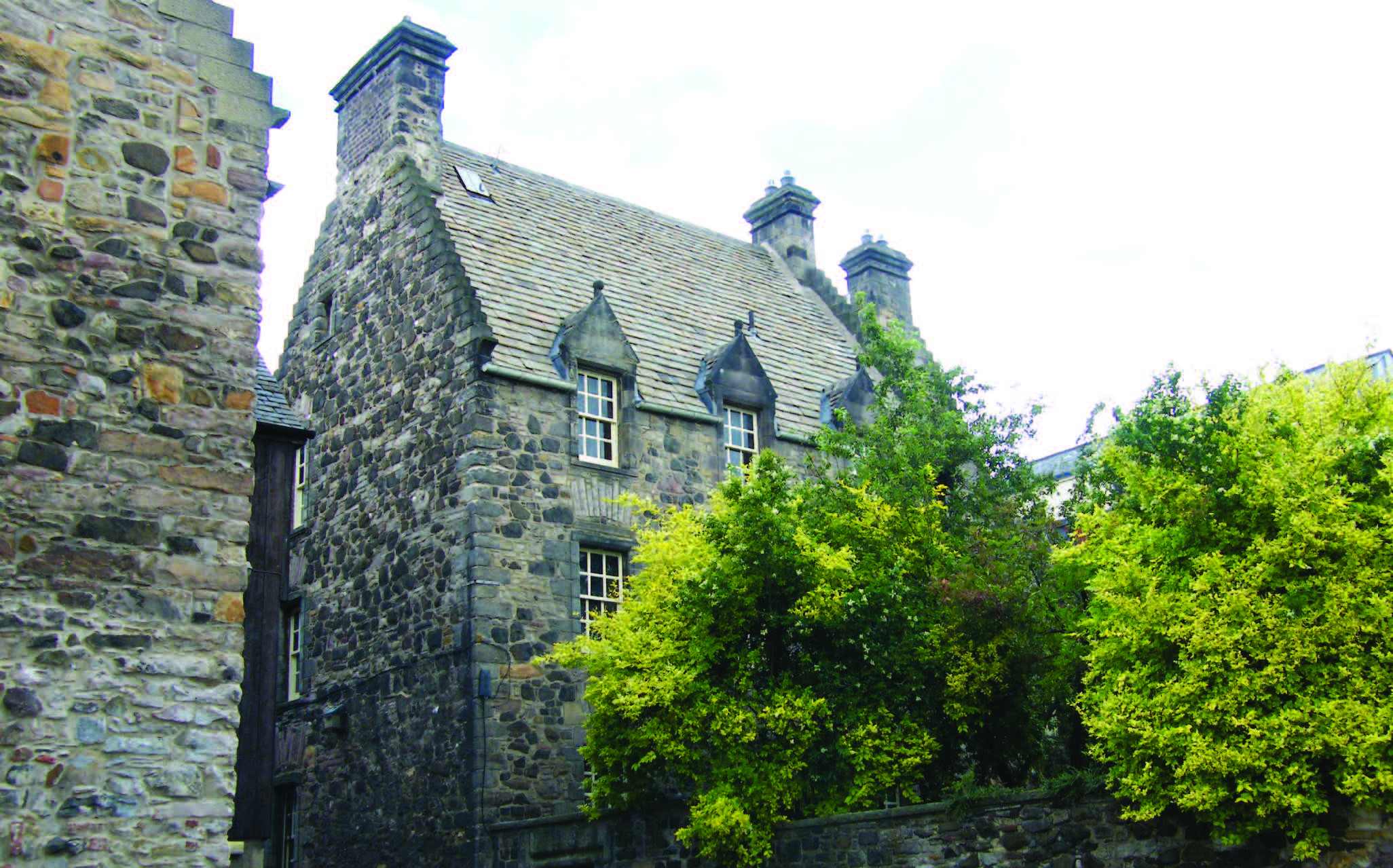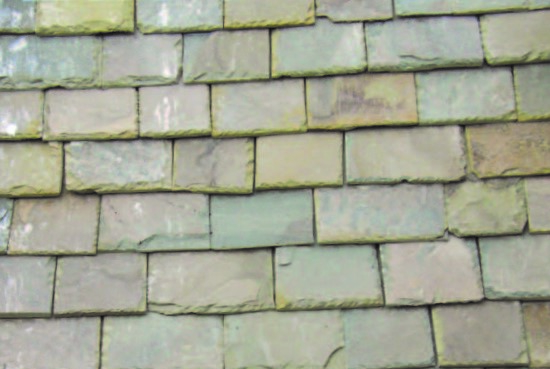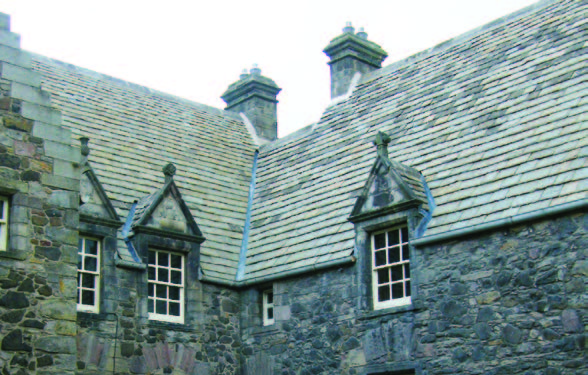Acheson House on the Royal Mile is one of Edinburgh’s most significant historic buildings. Built between 1633 and 1634, the stone building had many alterations before it was fully restored in 1937.
Before its refurbishment, the Category A listed building had fallen into disrepair and was on the Scottish Civic Trust’s Buildings at Risk Register. A grant from the Edinburgh World Heritage Trust allowed the first stage in the refurbishment to bring the building back to use as a possible museum.
The grant of almost £40,000 helped to restore the building’s roof, bringing back the structure to its original character. It also helped to promote the use of stone tiles or ‘slates’ as a vital traditional roofing material.
The finished project is an exemplar of the refurbishment of a building at risk and the regeneration of local industries and skills.
Stone features
The refurbishment of the roof at Acheson House is significant. It is one of a few buildings in the past 50 years to use indigenous Scottish stone as a roofing material.
The building uses special stone slates sourced from Pitairlie Quarry in Angus, which have not been produced in half a century in Scotland. The stone enabled full reparation of the roof, making the building wind and watertight before the refurbishment took place inside.
The stone is a densely compacted variety of sandstone and was traditionally used as roofing tiles, an alternative to slate and interior floor tiles.
Originally, Acheson House would have been roofed in stone tiles from local quarries around Edinburgh, which have long since closed. The recently re-opened Denfind quarry provided a historically accurate and appropriate roofing material for this conservation project.
The benefits of finding a source of appropriate material in Scotland include:
- opening up opportunities as a future source of roofing stone
- providing local employment
- contributing to the development of skills (new and old) essential for the conservation of historic buildings and new buildings
This project encourages the use of locally sourced, traditional material and demonstrates the potential long-term sustainability benefits of using local, indigenous materials.

Special techniques
Before the refurbishment of the roof, the original tiles were in poor condition. The refurbishment tiling process commenced by salvaging as much of the original stone as possible by sorting, resizing and replacing it with new material only when necessary. It was possible to reuse one third of the original material.
Two thirds of the new tiles were laid in the same manner as they would have been when the roof was first built. To achieve this, the stone was cut into thin slabs about 1cm thick and then fixed to a sarking board layer. This was in turn fixed to a timber-framed roof.
The stone slates are larger at the bottom and diminish in size moving up the roof towards the apex, a Scottish tradition that minimises material waste. The slates are held in place with a single copper nail. This is a modern intervention, as originally timber pegs would have been used (or iron nails during later conservation works).
In a slight deviation from normal Scottish slating practice, the larger tiles were double nailed in this renovation. The designers and conservators had concerns about the adequacy of single-point fixing due to the size and weight of each tile.
A library of sustainable building materials
Our website includes a web-based resource that showcases sustainable, traditional, innovative, recycled and low carbon building materials. If you are looking for inspiration or information on different types of materials to consider for your project, visit our materials library.




